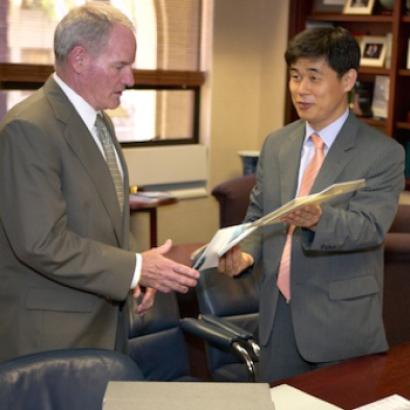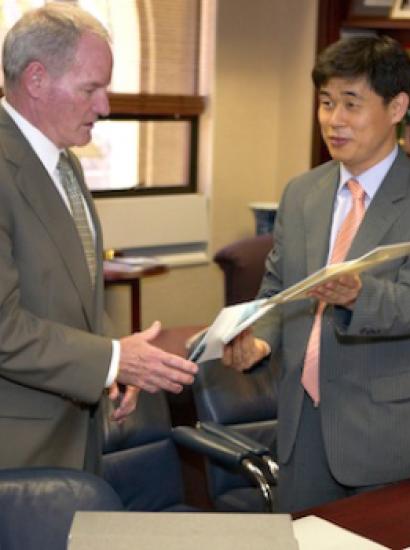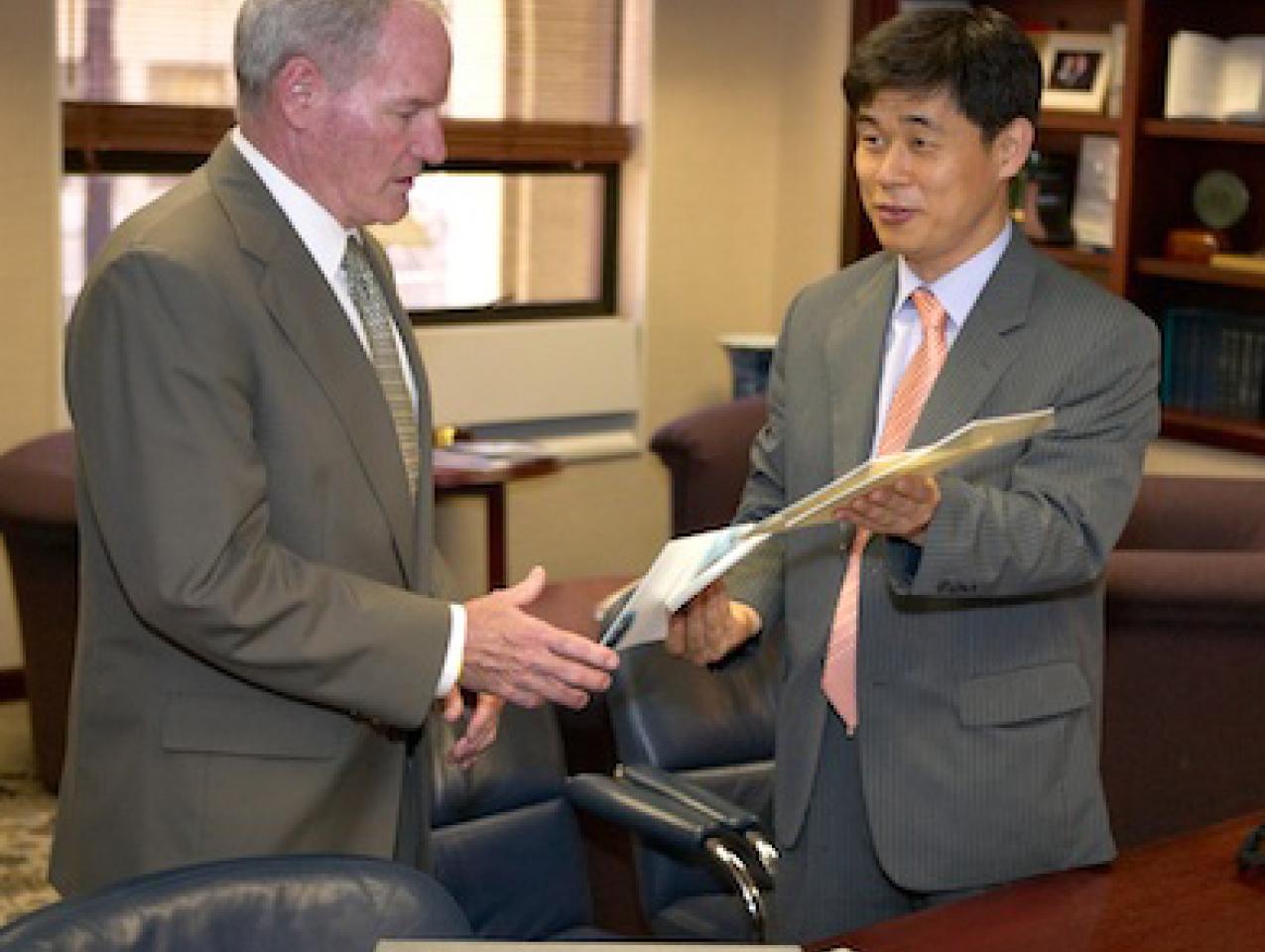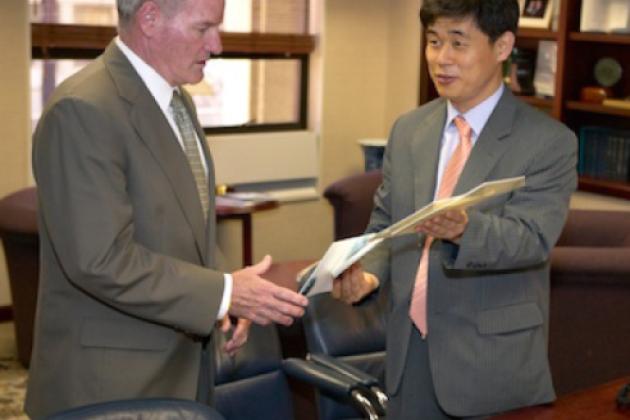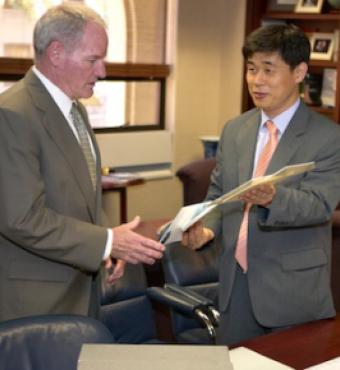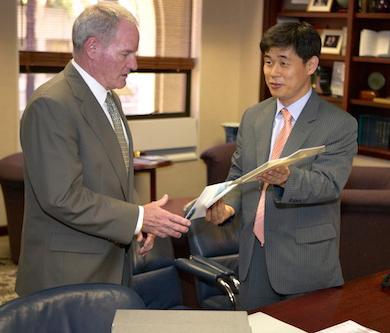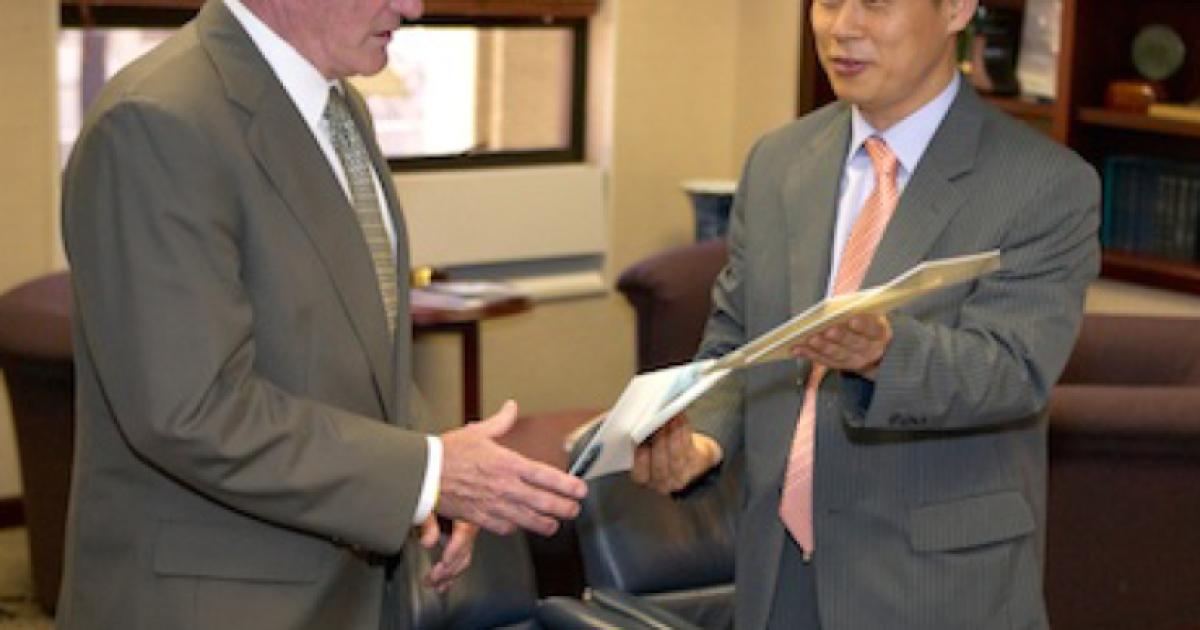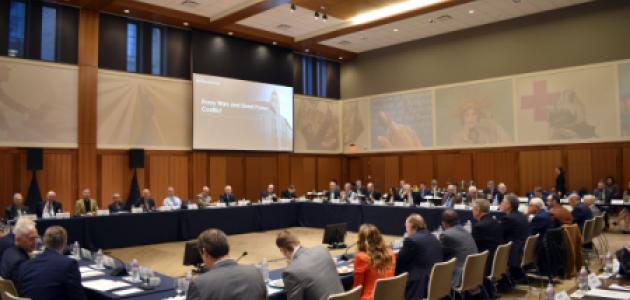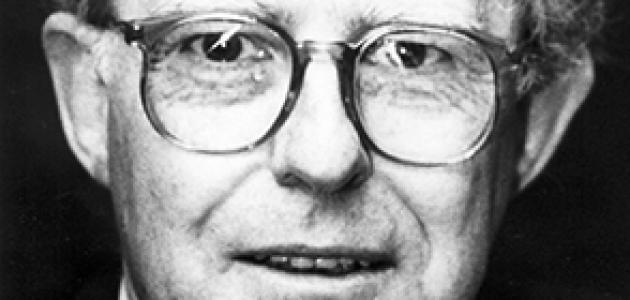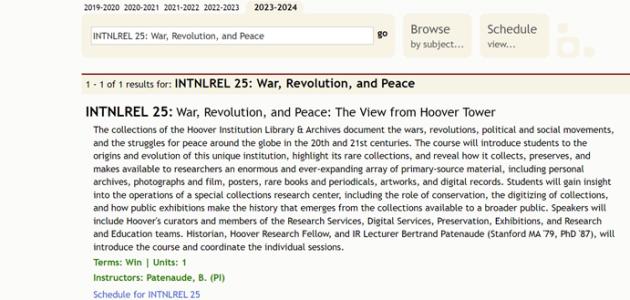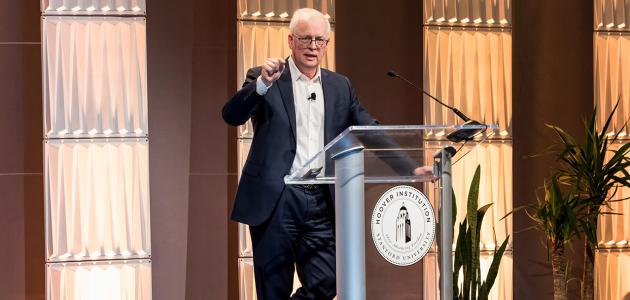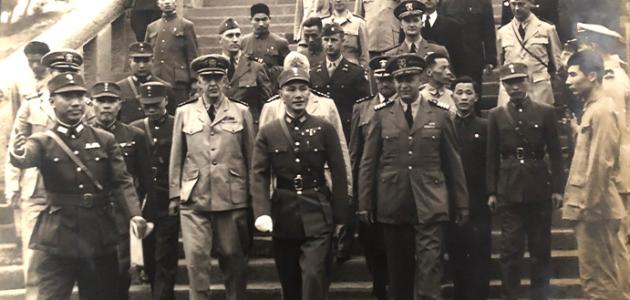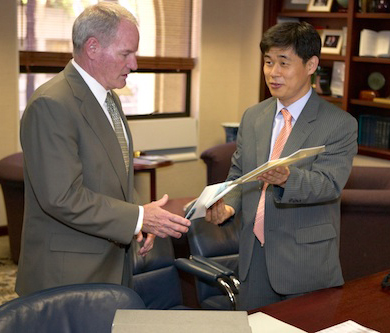
Recovered missing documents revealing long-held secrets are usually the basis of suspense novels. A copy of the Hoover Institution’s Japan Koshikan (Korea) records, however, may be a case of truth proving stranger than fiction.
A microfilm copy of the Koshikan collection was presented to Seong Choon Lee, director general for the Veterans’ Policy Bureau in the Republic of Korea’s Ministry of Patriots and Veterans Affairs, during his visit to the Hoover Institution Library and Archives on Wednesday, July 28, 2010.
Because this year marks the 100th anniversary of the death of Korean independence activist and national hero Ahn Jung-geun, the Ministry of Patriots and Veterans Affairs has stepped up efforts to track down records related to Ahn's trial and execution. Included in Hoover’s Japan Koshikan Records are "secret gendarmerie documents" related to Ahn’s assassination in 1909 of Ito Hirobumi, the Japanese resident general of Korea, and Ahn’s subsequent arrest and trial.
The collection’s story begins with the First Sino-Japanese War (1894–95), fought primarily over control of Korea, and Japan’s history in Korea through its annexation of Korea in 1910. By 1940, after years of collecting (but keeping under wraps) papers documenting the takeover of Korea, the Japanese government allowed a select group of Korean historians to examine the records. That group, from the Government-General’s Office for the Compilation of Korean History, spent the next few years making copies of the some 100,000 documents that covered the fifteen-year period beginning with the First Sino-Japanese War.
As the Japanese were preparing to surrender at the end of World War II, they reportedly destroyed the original documents concerning their Korean occupation and the copies in the possession of the history group. A senior scholar in the history group, Shin Sokho, by risking his life, was able to obtain the photographic plates of the documents, which he then buried in his garden. After the Americans arrived in Korea, the plates were given to the National Institute of Korean History, where they were made available for study.
Within a few years, however, the plates began to deteriorate. In 1948, Shin, now the director of the institute; U. S. military official Rae Gilman Engebretson; and the Hoover Institution arranged for photographic supplies to be shipped to Korea to make new prints of the deteriorating original photostats. Engebretson, assistant adviser in the Motion Picture Section of the Department of Public Information, U.S. Military Government in Korea, acted as a liaison between the National Institute of Korean History and the Hoover Institution. Two sets were made: one for the Korean institute and one for the Hoover Institution.
Before long, both sets of prints and the original plates were in jeopardy. During the Korean War, virtually all the original plates and part of the set of prints at the Korean institute were destroyed; the extant prints were facing the serious threat of discoloration, making them unreadable.
In 1957, however, the Hoover Institution had completed microfilming its set of prints, preserving for future generation of scholars the only complete set of those records.
In making the microfilm gift, Richard Sousa, director of the Hoover Institution Library and Archives, said that “Hoover’s goal is to preserve history, and it’s gratifying when we can see the fruits of our labor so clearly. It is a great honor for the Hoover Institution to help the people of Korea reclaim and complete their history with these documents.”
An early guide for the collection describes them as “the basic source for the study of modern Korea, international relations in the Far East, and Japanese policy and action in Korea during the critical fifteen years preceding the annexation. They also portray, in some detail, the political and economic policies and activities of Russia, the United States, Great Britain, France and other countries in Korea, as well as Korean domestic policies.”







